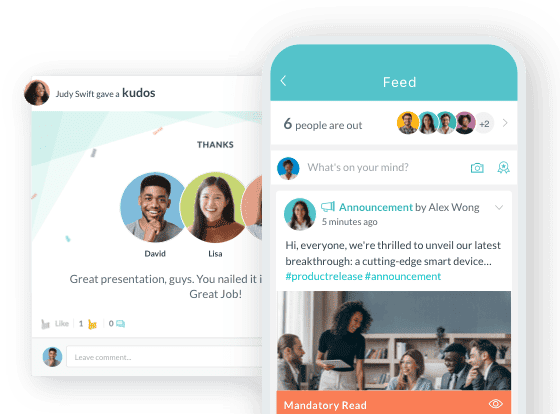Performance Management Software for Schools: Run Automated Review Cycles and Never Lose a Record Again
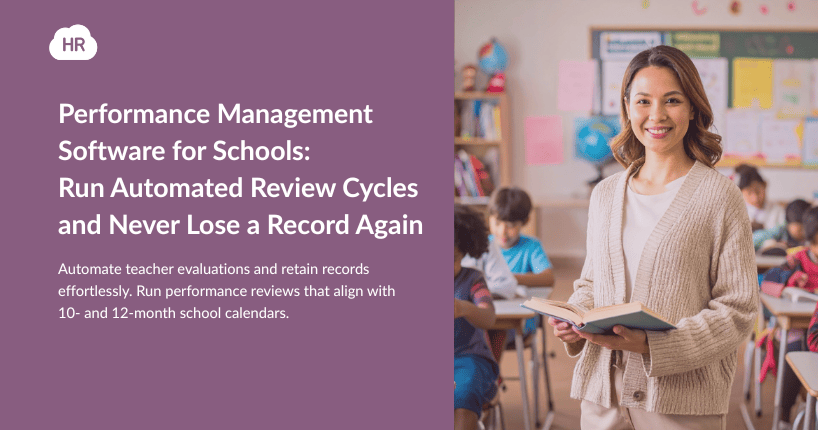
- The Real Challenge: Why Teacher Evaluations Drain More Than Time
- Why Reliable Performance Management Software for Schools Matters
- Must-Have Capabilities in a School Performance Management System
- How HR Cloud Simplifies Automated Teacher Evaluations
- Implementation Plan: How You Can Launch an Automated Performance Review System
- From Evaluation Fatigue to a Culture of Continuous Growth
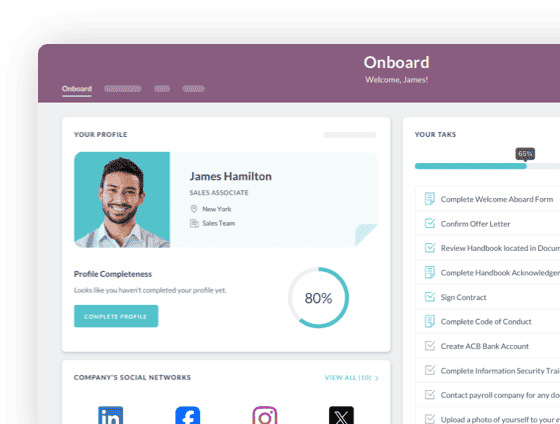
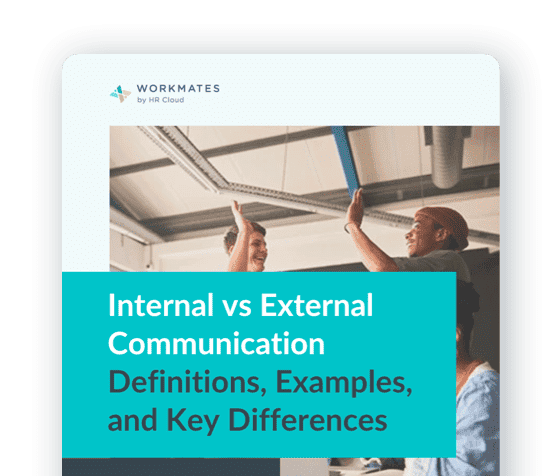
 Cut onboarding time
by 60%—here's the
Ultimate Checklist
that helped do it.
Cut onboarding time
by 60%—here's the
Ultimate Checklist
that helped do it.
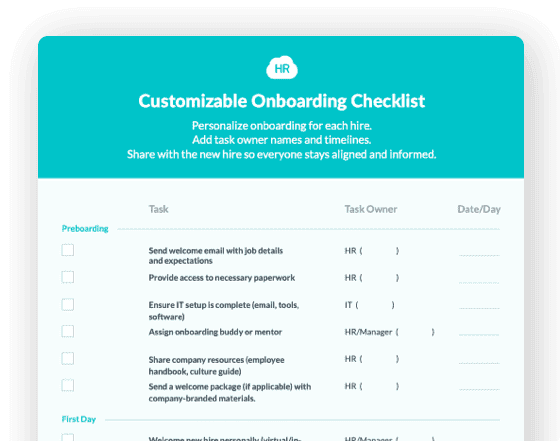
Ever feel like teacher evaluations are a full-time job in themselves? Juggling 10- and 12-month calendars, chasing review forms, and explaining the same rating scales every year, you’re probably ready to throw in the towel.
A 2024 Frontline Education report found that disconnected systems and manual workflows remain among the top frustrations for K-12 districts trying to manage staff evaluations and performance cycles. Combine that with rising retention pressures and it’s no wonder many HR leaders feel like they’re losing ground.
If you’ve ever thought, “We’re collecting feedback, but not improving performance,” you’re right to feel that way. The system’s broken but it doesn’t have to be. Let’s see how.
A Quick Summary
Teacher evaluations shouldn’t feel like an annual crisis, yet most districts still wrestle with spreadsheets, mismatched calendars, and missing forms.
-
A 2024 Frontline Education report found that manual processes and disconnected systems remain top frustrations for K–12 HR teams.
-
Endeavor Schools fixed that by using HR Cloud’s Workmates platform to connect schools, automate feedback, and ensure consistent communication.
-
When performance management becomes digital, reviews stop being paperwork and start driving professional growth.
-
The takeaway? Automate what slows you down and reinvest that time in your teachers.
The Real Challenge: Why Teacher Evaluations Drain More Than Time
Every HR manager in education struggles with this. Forms scattered across inboxes, principals emailing spreadsheets at 10 p.m., and half the staff following a 10-month schedule while the rest operating on 12. What should be a growth conversation turns into a scavenger hunt.
Manual performance reviews aren’t just inefficient but exhausting. But that’s the daily grind most HR teams are trapped in. And that too not because they lack commitment, but because their tools haven’t kept up with their calendars. Or expectations.
When Data Disappears, So Does Progress
Ask any principal what happens when a teacher transfers schools or leaves midyear. Files vanish, historical performance data gets archived (or worse, deleted), and all context for growth conversations evaporates.
Without a centralized performance management software for schools, patterns can go unnoticed. Critical information such as the teacher who improved dramatically last year, the department that consistently exceeds goals, or the support staffer who never got credit for student outcomes.
And when those insights disappear, it puts a spanner into developmental planning.
The Human Toll Behind the Admin Load
The issue isn’t just about logistics; it beats morale as well. Teachers who receive irregular feedback are 60% less likely to stay beyond three years, according to the Learning Policy Institute.
Meanwhile, administrators are stuck reconciling forms instead of coaching talent.
Every lost record, delayed review, or missing form chips away at trust and subsequently retention. And you already know that in a profession already battling burnout, trust is the one metric no district can afford to lose.
Why Reliable Performance Management Software for Schools Matters
When the review process breaks down, everyone has to bear the brunt.
HR leaders feel the pressure first. Principals scramble to track deadlines. Department heads waste hours coordinating forms and reminders. Teachers, caught in the middle, start seeing evaluations as compliance rather than growth.
According to a 2024 EdWeek Research Center survey, only 41% of teachers say they receive meaningful feedback from their evaluations. That means the majority see evaluations as paperwork, not progress.
When feedback loops collapse, it erodes trust, and trust is the foundation of engagement and retention.
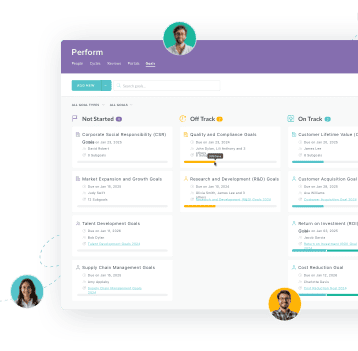
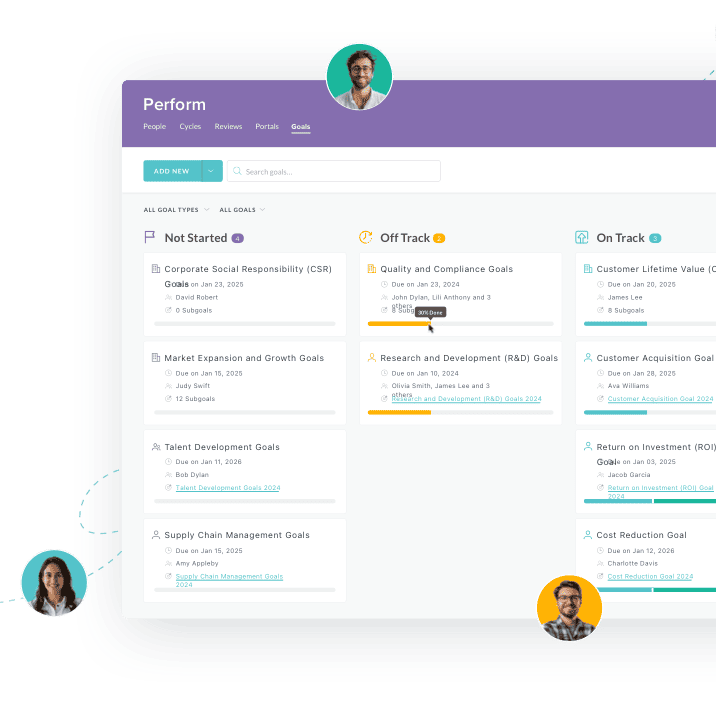
The Ripple Effect on Retention and Development
Teacher shortages still define the education landscape. The Frontline Education K-12 Lens 2025 report notes that while shortages have slightly improved, two-thirds of districts continue to struggle with staffing stability.
Poorly managed evaluations worsen the problem.
Without reliable data or continuous feedback, even strong educators can feel unseen. That frustration turns into attrition, which is expensive. Replacing a single teacher can cost a district $25,000 factoring in recruitment and training, according to the Learning Policy Institute.
Automated Teacher Evaluations Support Compliance and Consistency
Every district leader knows that inconsistency kills credibility. When one school uses a five-point rubric and another uses narrative comments, aggregated reports are useless.
A unified automated teacher evaluation system ensures consistency in scoring, timelines, and documentation. It eliminates the guesswork and provides audit-ready records. Something every superintendent and HR director appreciates when state inspectors come knocking.
Endeavor Schools, having a network of 100 schools across 14 states, uses HR Cloud to coordinate communication and feedback across its school network. The system ensures visibility at every level while providing multiple layers of communication at location, department, and channel level.
Must-Have Capabilities in a School Performance Management System
Choosing a performance platform is about finding a system that understands how schools actually work.
Between varied calendars, layered hierarchies, and plethora of compliance rules, even small deviations can matter. The right performance management software for schools should adapt to your reality, not the other way around.
Here’s what to look for.
#1. Configurable Review Templates That Match Your Evaluation Culture
No two schools follow the same rubric. Some rely on Danielson or Marzano frameworks; others design home-grown metrics. Your performance management software for schools should let you build, reuse, and tweak templates easily — self-reviews, peer feedback, and principal assessments all in one place.
Flexibility here means HR doesn’t need to rebuild the wheel every cycle, and teachers see evaluation forms that actually reflect their role.
#2. Automated Scheduling for 10- and 12-Month Calendars
Districts operate on overlapping timelines. Without automation, reviews clash with exams, breaks, and summer sessions.
Smart scheduling tools inside automated teacher evaluation systems allow you to assign cycles based on role or location — 10-month teachers, year-round staff, part-timers. The result: no missed windows, fewer reschedules, and a calmer HR calendar.
According to the Frontline K-12 Lens 2025 report mentioned earlier, 72 % of districts cite “timing and coordination across calendars” as a key barrier to effective evaluations. Automation solves precisely that.
#3. Persistent Employee Records That Retain Historical Reviews
When a teacher transfers or takes a break, their record shouldn’t vanish.
A strong school performance management platform preserves historical data even after off-boarding, giving returning staff and new administrators full context.
This continuity helps schools spot patterns in development and recognize long-term growth, which manual systems almost always lose.
#4. Aggregated Reporting and Insights by School, Program, or Building
School leaders need visibility beyond one classroom.
Aggregated dashboards help compare progress across schools, programs, or grade levels, revealing which initiatives drive measurable improvement.
The Frontline 2024 report noted that fewer than 40% of districts can currently generate unified HR analytics. That means most leaders are still making staffing or coaching decisions without trend data.
You need to ask yourself if you want to be one of them.
#5. Built-In Reminders and Manager Nudges
Even the best system fails if no one uses it. Automated nudges — gentle prompts that remind principals to review submissions or teachers to complete self-evaluations — keep the process on track.
These micro-automations eliminate the follow-up fatigue that HR departments quietly resent yet can’t avoid.
How HR Cloud Simplifies Automated Teacher Evaluations
The difference between a generic HR tool and one built specifically for schools lies in its ability to handle complexity without creating chaos.
HR Cloud’s performance management software for schools bridges that gap easily, giving HR, principals, and district leaders complete control from setup to reporting.
Configurable Review Cycles That Reflect Real School Life
HR Cloud lets you create and run multiple review cycles — self, peer, and manager — with templates that mirror your district’s exact frameworks. Whether it’s Danielson, Marzano, or a custom rubric, you can replicate it digitally without starting from scratch each term.
Calendar Rules for 10- and 12-Month Staff
No more juggling overlapping timelines.
The platform allows you to design schedules that align with different academic calendars. HR Cloud’s automation engine automatically adjusts cycles so reviews never collide with breaks or testing windows. A small but critical win for schools.
Persistent Records That Travel with Employees
Even when a teacher moves between schools or leaves temporarily, their historical reviews remain intact. This persistent record helps new administrators see growth over time and reduces compliance risk when audit season comes knocking.
Dashboards and Reports That Tell the Full Story
Leaders can view performance trends by school, grade band, or program from a unified dashboard. Reports export cleanly to PDF or Excel for board presentations or compliance submissions. That means less time stitching together data and more time making data-backed decisions.
Real Example: All About Kids Automates Compliance and Retains Historical Data
All About Kids, a 1,200-employee healthcare organization, faced onboarding and documentation challenges almost identical to those in education: strict credentialing, complex role structures, and mountains of paper. By adopting HR Cloud’s automation, they achieved full visibility and permanent record retention across programs.
“HR Cloud helped us significantly improve the overall efficiency and accuracy of our documentation processes. Instead of trying to get it all done on their first day — where sometimes certain documents were overlooked — we now use HR Cloud to automate the entire process and create the right tasks to make sure we collect all the information we need.”
— Jesse Rose, Provider Recruitment, Onboarding & Compliance Manager
 — Jesse Rose,
— Jesse Rose,Provider recruitment, onboarding, and compliance manager


The same structure that keeps therapists credential-ready can keep teachers evaluation-ready, preserving institutional memory and simplifying audits year after year.
Implementation Plan: How You Can Launch an Automated Performance Review System
Rolling out a district-wide performance management platform doesn’t have to feel like another project no one has time for. The key is going one step at a time and tackling people, processes, and technology in the right order.
Here’s a detailed roadmap schools can follow to launch confidently within one academic term.
Phase 1: Preparation and Stakeholder Alignment (Weeks 1–2)
Objective: Build buy-in and establish governance.
-
Identify your core team: One HR lead, one IT support rep, and one principal from each pilot school.
-
Clarify evaluation goals: What’s broken today? What metrics will define success — completion rate, feedback quality, or consistency?
-
Audit your existing process: Collect current rubrics, forms, timelines, and reviewer roles.
-
Communicate the “why”: Share with teachers how automation will reduce admin load and preserves transparency.
🎯 Output/Outcome: A one-page charter outlining purpose, success metrics, and timelines.
Phase 2: Configuration and Pilot Setup (Weeks 3–6)
Objective: Create a working model for three pilot schools.
-
Import staff lists and assign user roles (HR, principal, department head, teacher).
-
Configure review templates to match your existing rubrics (Danielson, Marzano, or custom).
-
Set calendar rules for 10-month vs. 12-month schedules.
-
Automate reminders and assign escalation paths for late reviews.
-
Test email and notification workflows to ensure nothing lands in spam filters.
“We use HR Cloud to set up detailed workflows, notifications, and dashboards to see exactly where each onboarding experience stands.”
— Miki Loveless, HR Business Partner, Christopherson Business Travel
🎯 Output/Outcome: Pilot configuration tested with three administrators and five teachers per school.
Phase 3: Training and Soft Launch (Weeks 7–8)
Objective: Equip managers and teachers for a smooth start.
-
Conduct one-hour virtual or in-person training for principals and department heads.
-
Create a short “Getting Started with Reviews” PDF for teachers.
-
Run a sandbox test with dummy data to simulate an entire review cycle.
-
Collect initial usability feedback via quick Google Forms surveys.
🎯 Output/Outcome: All pilot users trained and confident in navigation and submission.
Phase 4: Live Pilot Cycle (Weeks 9–14)
Objective: Run one real review cycle under supervision.
-
Launch the first real review cycle for your pilot schools.
-
Monitor progress daily through HR Cloud dashboards — watch for completion rates and delays.
-
HR team sends weekly nudges to ensure compliance.
-
Collect qualitative feedback after each milestone from principals and reviewers.
🎯 Output/Outcome: Completion report showing cycle time, completion rate, and feedback accuracy improvements.
Phase 5: Evaluation and Refinement (Weeks 15–16)
Objective: Learn, adjust, and prepare for district-wide scale.
-
Analyze metrics such as completion time, late reviews, and teacher satisfaction.
-
Revise templates or reminders where needed.
-
Gather testimonials from pilot participants to build internal advocacy.
-
Present pilot outcomes to district leadership with a short impact deck.
🎯 Output/Outcome: Leadership approval for district-wide rollout.
Phase 6: District-Wide Rollout (Weeks 17–24)
Objective: Scale across all schools with consistent structure.
-
Clone proven workflows to all remaining schools.
-
Offer 30-minute “refresher” sessions for department heads.
-
Introduce advanced analytics and year-over-year comparison dashboards.
-
Enable PDF exports and report templates for state audits or board meetings.
🎯 Output/Outcome: A fully automated, district-wide performance review cycle that generates proprietary data you can trust.
From Evaluation Fatigue to a Culture of Continuous Growth
Performance management should help great teachers become even better and give leaders the insights to make that possible.
But when your systems can’t keep up, even the most well-intentioned reviews turn into administrative chaos.
And that’s what HR Cloud’s performance management software for schools solves. A single platform that runs automated teacher evaluations, retains historical data, and gives you real-time visibility across every school and program.
With the right foundation, performance conversations stop being seasonal events and start becoming part of your culture.
If you’re ready to move from managing reviews to building improvement, now’s the time.
🎯 Next steps:
Book a personalized demo to see how HR Cloud’s performance tools can fit your school or district.
Because every hour saved on admin is an hour you can reinvest in what truly matters — your teachers and students.
 Discover how our HR solutions streamline onboarding, boost employee engagement, and simplify HR management
Discover how our HR solutions streamline onboarding, boost employee engagement, and simplify HR management
Frequently Asked Questions
What are the 5 components of a performance management system?
The five key components are goal setting, continuous feedback, performance evaluation, employee development, and recognition. In schools, these translate into setting measurable teacher goals, providing classroom observations and coaching, conducting formal evaluations, supporting professional learning plans, and celebrating achievement. A well-designed performance management software for schools aligns all five into one automated workflow, so progress doesn’t get lost between forms and meetings.
What are the 5 C’s of performance management?
The 5 C’s stand for Clarity, Consistency, Communication, Connection, and Continuous Improvement. When applied to education, they mean defining clear standards, maintaining consistent evaluation criteria, communicating feedback effectively, building strong teacher-leader connections, and fostering ongoing improvement. Automation helps uphold these principles by ensuring evaluations and feedback loops happen regularly and fairly.
What are the 4 Ps of performance management?
The 4 Ps are Plan, Progress, Perform, and Partner. Schools start by planning goals aligned with learning outcomes, tracking progress through automated evaluations, reviewing teacher performance, and partnering with staff for professional growth. A digital system keeps all four Ps visible and measurable, so nothing depends on memory or manual tracking.
What are the 4 stages of performance management?
The four stages are Planning, Monitoring, Reviewing, and Rewarding. During planning, expectations and goals are set; monitoring involves classroom observations and check-ins; reviewing captures the formal evaluation cycle; and rewarding links performance to recognition and career development. Automating these stages ensures that each cycle runs on time and teachers receive timely, meaningful feedback.
How is a performance management system different from appraisals?
A performance management system (PMS) is continuous, strategic, and development-focused, while appraisals are usually one-time, end-of-year events. A PMS tracks goals, progress, and feedback throughout the year — not just at review season. Schools that move from paper-based appraisals to automated systems see stronger engagement because teachers view evaluations as part of growth, not judgment.
How long does it take to implement a performance management software for schools?
Implementation timelines vary, but most districts can roll out a pilot within one academic term. Starting small — with 2–3 schools — helps fine-tune workflows and templates. With HR Cloud, configuration is modular, meaning you can replicate successful models across schools without rebuilding the system.
What data can schools track using a performance management platform?
Schools can track teacher evaluations, feedback notes, goal completion rates, observation data, and student impact metrics. Advanced systems generate aggregated reports by school, subject, or grade level, allowing leaders to analyze trends and identify training needs. Over time, this data builds a longitudinal view of teacher growth.
How does automation improve teacher evaluations?
Automation removes repetitive tasks like chasing deadlines, assigning reviews, or sending reminders. It ensures evaluation cycles align with academic calendars and keeps every reviewer accountable. Most importantly, it allows HR and principals to focus on mentoring teachers instead of managing paperwork — a proven way to improve satisfaction and retention.

Keep Reading
Embracing Diversity: Recognizing Different Cultures in the Workplace
Workplaces today reflect the incredible diversity of the world around us. People bring
From Manual to Automated: A Complete Guide to Digitizing Employee Onboarding for Large Organizations
Sarah Chen, Director of HR at a 7,000-employee healthcare organization, starts her Monday
Enterprise HR Software in 2025: Why Traditional Enterprise Platforms Fall Short and What Actually Works
Traditional enterprise human resources software systems promise comprehensive solutions
Like What You Hear?
We'd love to chat with you more about how HR Cloud® can support your business's HR needs. Book Your Free Demo

Build a Culture of Recognition. Boost Engagement. Guaranteed.
Workmates empowers employees to stay informed, connected, and appreciated—whether they’re on the front line, in the office, or remote. Recognition drives 12x higher engagement.Trusted by industry leaders in every sector




Cut Onboarding Costs by 60%.
Take the confusion and follow-ups out of onboarding with automated workflows, digital forms, and structured portals—so new hires ramp faster 3X quicker.Trusted by industry leaders in every sector




